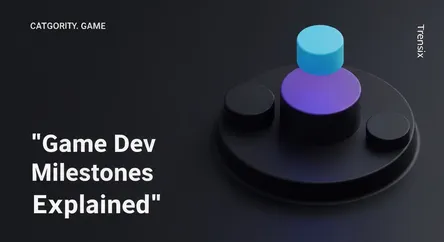Game
Game Dev Milestones Explained

Discover the role of milestones in game development. Learn how key stages like alpha, beta, and gold master track progress and define a project's success.
What is it?
In game development, a milestone is a specific point in a project's timeline that signifies the completion of a major phase or deliverable. It's a project management tool used to track progress against a schedule. Common milestones include 'First Playable,' where the core gameplay loop is functional; 'Vertical Slice,' a polished, short demo representing the final quality; 'Alpha,' when the game is feature-complete but needs polishing; 'Beta,' when it's feature- and content-complete and ready for bug testing; and 'Gold Master,' the final version ready for manufacturing and release.
Why is it trending?
As game development becomes more complex and expensive, clear project management is essential. Milestones provide crucial structure, breaking down a multi-year project into manageable chunks. They are vital for securing and maintaining funding from publishers, who typically release payments only after a milestone is approved. Public-facing milestones, like a closed or open beta, have also become powerful marketing tools, building hype and gathering player feedback before the official launch. This transparency helps manage community expectations and fosters engagement.
How does it affect people?
For developers, milestones create clear goals and a sense of accomplishment, but they can also be a source of intense pressure and 'crunch' if deadlines are tight. For publishers and investors, they are critical checkpoints to assess a project's health and decide whether to continue funding. For players, milestone announcements offer a glimpse into the development process. Participating in a beta test allows them to influence the final product by reporting bugs and providing feedback, while the 'gone gold' announcement confirms the game is officially on its way to their screens.